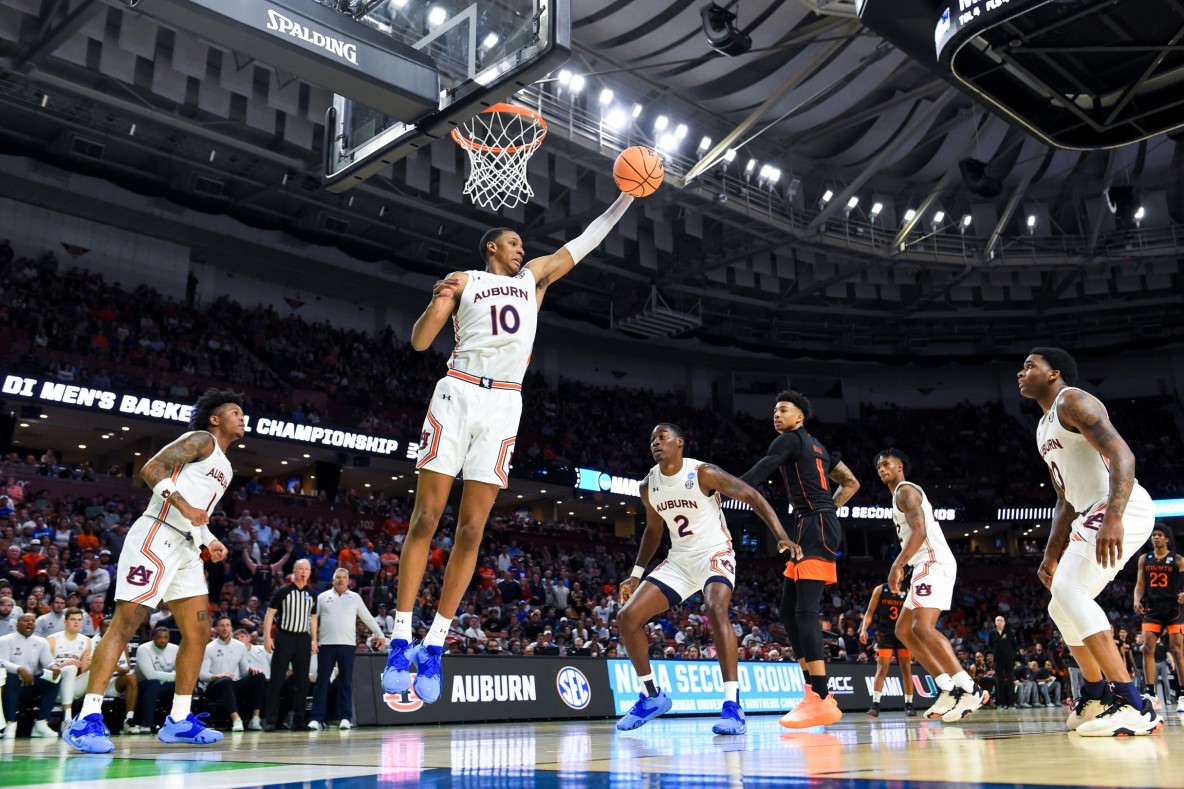There are numerous stats you can use to review the performances of teams and players during March Madness. This can help you identify who is and isn’t playing well and, therefore, where the value in the odds may be.
-
Scoring: Points are awarded in basketball for successfully throwing the ball through the basket (or hoop). Scoring stats are important to research for markets such as total or over/under points and various prop bets.
-
Points per game: A team or player’s points per game is the average number they get in a match. This is useful for checking which teams are performing the best offensively, and who a team’s key offensive players are.
-
Field goal percentage: This is the percentage of shots that a team or player makes in a March Madness game. It is calculated by dividing the number of shots made by the number of shots attempted.
-
Free throw percentage: A free throw is an unguarded scoring attempt awarded after a player commits a foul. The free throw percentage is the percentage of free throws that a team or player successfully makes in a game. Being good at free throws is useful for helping teams get points on the board.
-
Three pointers made: This is the total number of converted three-point attempts made by a player or team. If a team or player is very good at making three pointers, this may be worth bearing in mind for total or over/under points markets, and prop bets such as how many three pointers there will be in a match.
-
Three-point percentage: This is the percentage of three-point shot attempts that a team or player makes in a March Madness game. It is calculated by dividing the number of three pointers made by the number of three pointers attempted.
-
Assists: A player gets an assist when they pass the ball to a player who then scores a basket. These are useful for measuring the offensive performances of players and teams, as well as gauging how willing a player or team is to move and share the ball in offense.
-
Rebounds: Rebounds occur when a player retrieves the ball after a missed shot or free throw. They are either offensive (when the offensive team recovers the ball) or defensive (when the defending team wins possession). Rebounding efficiency is calculated by dividing the number of rebounds a player has got by the number of games they have played.
-
Turnovers: Turnovers occur when a team loses possession of the ball to the opposing team before they shoot at the basket. Teams with a high turnover rate are more likely to be wasteful in possession and therefore struggle offensively.
-
Steals: Steals occur when a player intercepts a pass, legitimately takes the ball away from an opponent, or otherwise acquires control of the ball following an opponent's turnover. Steals are important, as they can reduce or prevent the opponent's shot attempts while creating offensive opportunities.
-
Blocks: A block occurs when a defensive player legally deflects an offensive player's attempt to make a shot. Sportsbooks often offer prop bets related to blocks, such as whether a specific team or player will make over or under a specified amount.

